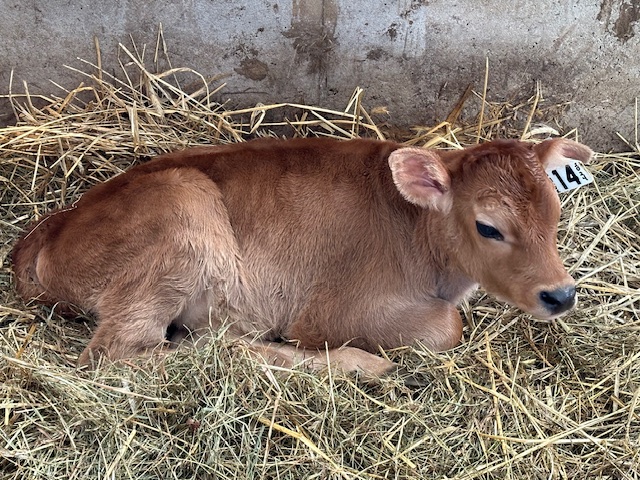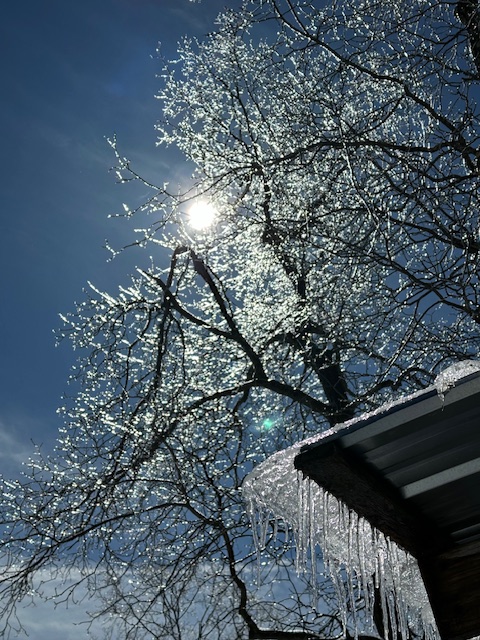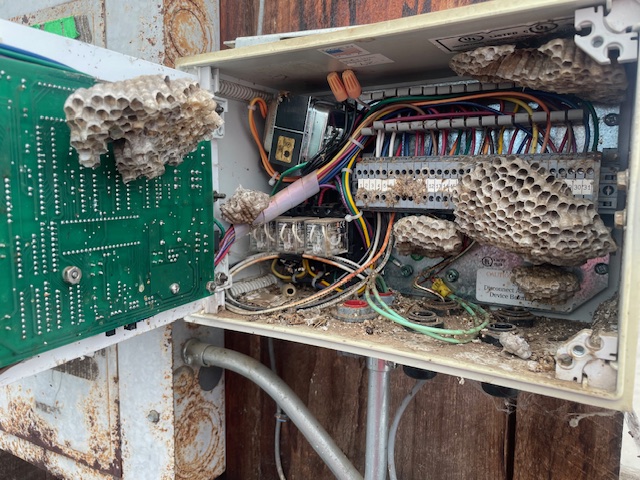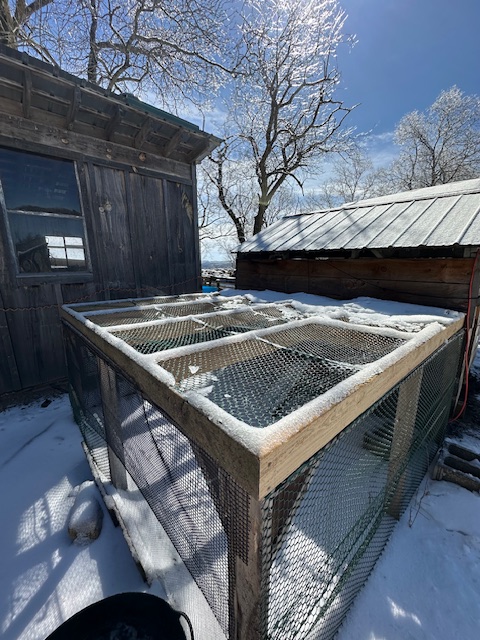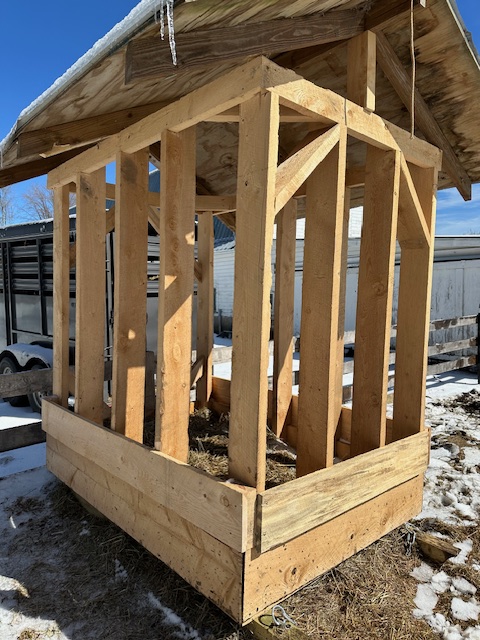Our first-calf-heifer Phlox, daughter of the wonderful Phoenix, delivered a bull-calf on Wednesday afternoon, and both Phlox and her boy Pharaoh are doing great. Pharaoh did a bit of the classic Jersey bull-calf ‘I’m not sure I want to live‘ thing, but with a bit of coaching and support, we’ve got him nursing on his own and I think he’s headed in the right direction now. We had been going through a remarkably mild March up until the middle of this week, but things changed right around the time when the little fellow was born, and he has had to endure some pretty chilly wet weather. I’ve heard farmers claim that cold weather will actually drive a new baby to nurse more and to grow better since it gives them some added motivation to fend off the cold temperatures, but I am certainly more comfortable when new babies show up under a bit warmer conditions than what we’ve had this week. Our other heifer Ruby is due to calve in a few days, but for now, Phlox and Pharaoh are in the calving pen, staying out of the weather, and building the strong connection that will serve them well through the coming months. Phlox delivered her calf on her actual due-date, according to our calculations, and I’m not sure that I have ever seen that in fifteen years of dairy farming at The Farm School.
After a real change in the weather and some terribly cold and windy conditions that blew over the farm Thursday and Friday, an enormous rain and snow producer moved across New England this weekend and soaked the farm. A bit of snow came first Friday night, but then we spent all day Saturday watching every kind of rain and frozen mess fall on the farm before the system moved out Saturday night and temperatures fell into the twenties. This storm produced almost two feet of snow at elevation a few hours north of here, but we have been left with an icy mess and saturated soil. The forecast leads me to some hope that things will melt away pretty swiftly in the coming days, and that maybe this was our last bit of winter before spring really sets in. I think that we get a bit of snow every April however, so I bet we’re not fully out of the woods yet.
The windy conditions here this week were a real challenge in the veggie fields, and several of the heavy silage tarps that we use to prep planting beds were torn up and damaged by the gusty conditions. The veggie team spent a good part of the week trying to keep the tarps from blowing away entirely, and the difficult conditions have prompted an effort to rehab our sand-bag supply. We use these little sandbags to weigh the tarps down, so the veggie team has been going through the bags, topping off those that have gotten a little light, and putting together more. We fill our own sandbags, so this is a lot of shoveling, zip-tying and moving heavy things around. The wind was also a challenge with our malfunctioning greenhouse vent, and Kristen continued to search for a service provider who will come out and set the thing to rights. The vent, at the peak of the greenhouse roof, is designed to open and close in communication with a thermostat inside measuring the temperature of the greenhouse. Our vent has not been functioning properly, and the windy conditions have meant that the vent has had to stay closed to avoid damage. Inside the greenhouse, we continue spring seeding work, and onions went first this week, as usual.
These challenging weather conditions have also meant the end of the maple sugaring season, and the forestry team has started pulling the sap buckets from the trees along our road. Though the season wasn’t a banger, we did make some syrup, and certainly more than I expected when it started so warm and mixed up. Most of our forestry work is concentrated in the winter and spring, so the forestry team has also started cleaning up their processing yard, finishing up their cord-wood stacks, and generally getting that space ready to be left for the summer. We’ll keep going out in the woods for sure, and the sugar-shack is often a nice place for summer whittling projects or for kids who just need to split some wood, but the work of the fields and pastures will take up just about all of our time once the growing season gets going.
Farmer Grace did a couple of great carpentry projects this week, and we now have a deeper tray for the hay in the dairy herd’s dry-hay feeder, and a netting top on the brooder’s outside yard. Grace wants to try to hatch our own eggs this summer, so she’s been retrofitting the brooder to hold a few hens and a rooster who we hope will collaborate to generate some fertilized eggs. She’s covered the brooder yard so that the chickens can’t just hop out, and this will make the space safer for chicks and pullets too when they’re in there after our breeding program is done. The dry-hay feeder, completed a few weeks ago, has been working well, but we decided to make the sides at the bottom a little higher in the hopes of keeping a little more hay inside instead of outside the feeder.
| ReplyForward |
